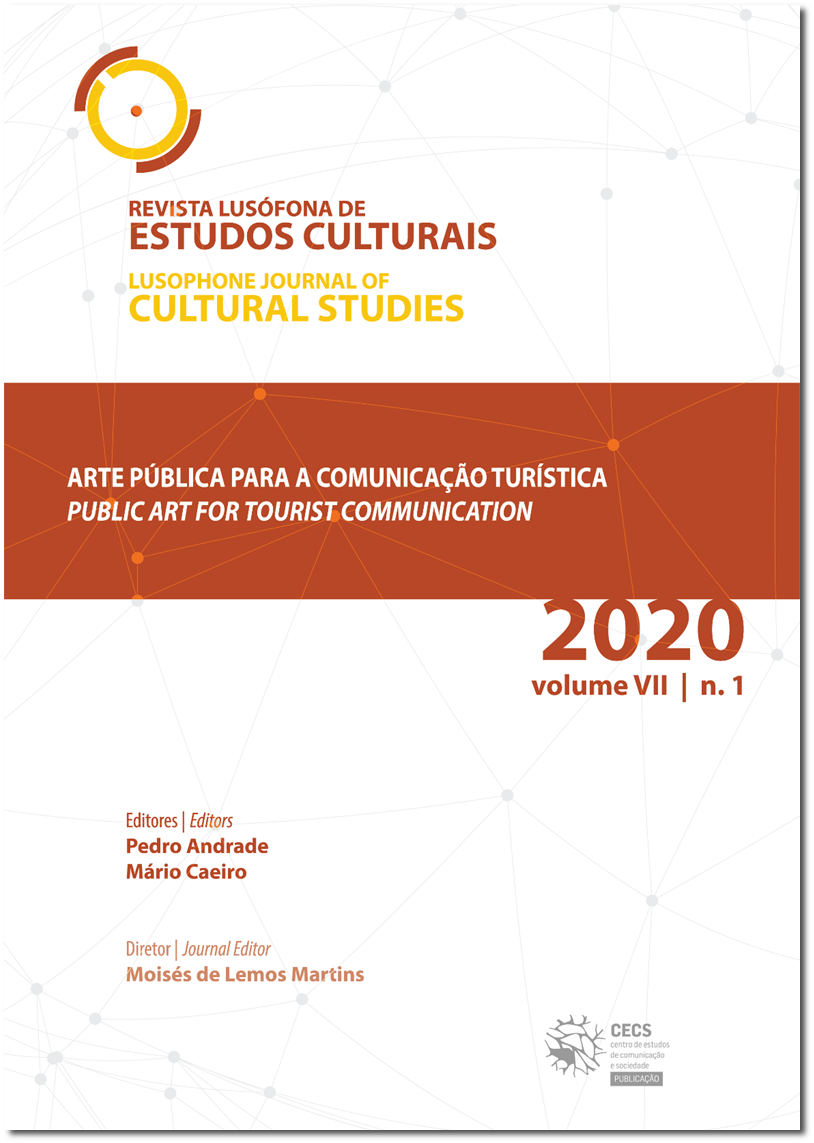You beautiful, Curitiba: digital media, identity and citizenship
DOI:
https://doi.org/10.21814/rlec.2117Keywords:
design, digital media, Instagram, smart cities, CuritibaAbstract
This article deals with design and communication aimed at smart cities. Being a smart city has been a strategy adopted by many cities. Based on information and communication technologies (ICT), they aim to attract investment, increase competitiveness and thus improve the quality of life of its residents and visitors. Therefore, the generation of objects and communication elements made available by municipalities widely, both in physical and digital form, is part of this process. Studies on the role of design in cities have been developed, especially in Europe, with recent repercussions in Brazil. However, little is known about how municipalities appropriated these new technologies to strengthen local identity and to promote citizenship, characterizing them as a smart city. Thus, this study is based on the role of design associated with digital media currently to understand its contribution to self-conscious, independent and attentive citizen behavior. Considering that Curitiba is named a smart city, the study presented here aims to identify the way the city government considers the communication elements associated with its projects. As a method, a field study was conducted taking into account the images posted on Instagram of the same city, supported by studies on the impact of globalization as in Castells (2006), the concepts of non-place (Augé, 1994) and “digital swarm” (Han, 2018). The study demonstrates the importance of the political role of these insertions to the result in acts that helps the construction of citizenship.Downloads
References
Andrade, P. (2018). A investigação híbrida: pontes e pontos de contato entre as tecnologias sociais e as ciências sociais. In J. Herrero & M. Trenta (Eds.), Comunicación y música: mensajes, manifestaciones y negócios (pp. 134-135). La Laguna: Sociedad Latina de Comunicación Social. Retirado de http://www.cuadernosartesanos.org/2018/cac145.pdf
Augé, M. (1994). Não-lugares: introdução a uma antropologia da supermodernidade. Campinas: Papirus.
Caragliu, A., del Bo, C. & Nijkamp, P. (2011). Smart cities in Europe. Journal of Urban Technology, 18(2), 65-82. https://doi.org/10.1080/10630732.2011.601117
Castells, M. (2006). A sociedade em rede: do conhecimento à política. In M. Castells & G. Cardoso (Eds.), A sociedade em rede do conhecimento à acção política (pp. 17- 30). Lisboa: Imprensa Nacional. Retirado de http://www.egov.ufsc.br/portal/sites/default/files/anexos/a_sociedade_em_rede_-_do_conhecimento_a_acao_politica.pdf
Castells, M. & Cardoso, G. (2006). Prefácio dos autores. In M. Castells & G. Cardoso (Eds.), A sociedade em rede do conhecimento à acção política (pp. 9-14). Lisboa: Imprensa Nacional. Retirado de http://www.egov.ufsc.br/portal/sites/default/files/anexos/a_sociedade_em_rede_-_do_conhecimento_a_acao_politica.pdf
Contreras, F. R. & Sanches, D.M. (2018). Métodos visuales. Análisis de la problemática visual entre la imagen icónica y la predicación política. In J. Herrero & M. Trenta (Eds.), Comunicación y música: mensajes, manifestaciones y negócios (pp. 914- 926 ). La Laguna: Sociedad Latina de Comunicación Social. Retirado de http://www.revistalatinacs.org/18SLCS/2018_libro2/048_Contreras.pdf
Debord, G. (2003). A sociedade do espetáculo. eBooksBrasil.com [eBook]. Retirado de http://www.cisc.org.br/portal/biblioteca/socespetaculo.pdf
Hefting, P. (2008). El compromise social del diseño público: el caso “Holanda”. In S. Fernández & G. Bonsiepe (Eds.), Historia del diseño e Amercia Latina y el Caribe: industrialización visual para la autonomia (pp. 274-291). São Paulo: Blücher.
Han, B-Ch. (2018). No enxame. Perspectivas do digital. Petrópolis: Vozes.
Gibson, S. (2017, 9 de julho). Service design 101. Retirado de https://www.nngroup.com/articles/service-design-101/
Kozinets, R. (2017). Netnography: radical participative understanding for a networked communications society. In S. Willig & W. S. Rogers (Eds.), The Sage handbuch of qualitative research in psychology (pp.374-380). Los Angeles: Sage Publications.
Mulgan, G. (2006) Moldar de novo o Estado e a sua relação com os cidadãos: o potencial das tecnologias de comunicação e informação no curto, médio e longo prazo. In M. Castells & G. Cardoso (Eds.), A sociedade em rede do conhecimento à acção política (pp. 205-213). Lisboa: Imprensa Nacional. Retirado de http://www.egov.ufsc.br/portal/sites/default/files/anexos/a_sociedade_em_rede_-_do_conhecimento_a_acao_politica.pdf
Ruggeri, D. & Young, D. (2016). Community in the information age: exploring the social potential of web-based technologies in landscape architecture and community design. Frontiers of Architectural Research, 5(1), 15-25. https://doi.org/10.1016/j.foar.2015.12.001
Sá, T. (2014). Lugares e não lugares em Marc Augé. Tempo social, 26(2), 209-229. https://doi.org/10.1590/S0103-20702014000200012
Whiteley, N. (1993). Design for society. Londres: Reaktion Books.
Downloads
Published
How to Cite
Issue
Section
License
Authors own the copyright, providing the journal with the right of first publication. The work is licensed under a Creative Commons - Atribuição 4.0 Internacional License.












